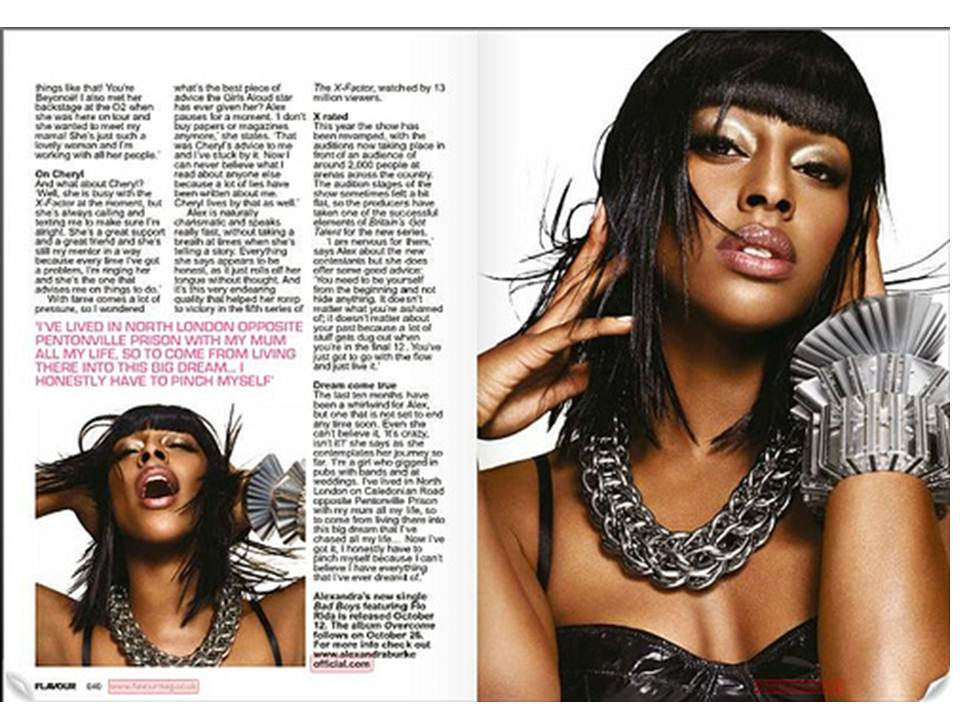Print brief research and planning
1) Find at least five music magazine front covers (either current or former magazines as many have stopped their print editions) aimed at a similar target audience to your project (mainstream music audience) and research music magazine key conventions. For each one, pick out one design idea, convention or image/text style that you could use in your own print work.

- High key lighting
- Sans serif font- bold colour bg


unique cover image

Different location
colours in text matching colours in image

lighting
colours
2) Find at least five double-page spread features from music magazines on Google images. How are they designed? How are text and images displayed? What design tricks can you borrow from your examples?
Bright colours
Multiple pics
direct address
Multiple colours
3) Find at least five music artist tour posters from Google images. How are they designed? How are images used alongside text? Which UK venues would suit your artist or band? Some examples:
Big text
colours
artist in centre
tour dates at bottom
bright colours
tour dates at bottom
tour locations next to artist
Bright colours
Colours matching clothes
Bold text
4) Read at least three example music interview features from newspapers and magazines to learn the format, writing style and content for a music magazine interview. You may wish to use the following to help you:
'I'm an alchemist': Nova, the unknown MC with the Scottish album of the year (900 words)
Rapper SL: ‘When I was coming up, there was nobody else on my level’ (500 words)
Davido on his song ‘FEM’ becoming an #ENDSARS anthem: “It’s amazing to see” (1,500 words)
Tom Vek tells us about his surprise album ‘New Symbols’ (1,300 words)
Interview: 'There's something to scream about': Bring Me the Horizon's pandemic political awakening (1,600 words)
Planning and sketching
1) Plan the content and cover lines for your front cover:
Title (must be NEW original mainstream music magazine you have invented): Echo
Slogan: Resonating with Every Beat
Cover image:
Main cover story/main flash:
Additional cover lines:
Additional two smaller cover images:
Font style / colour scheme, additional design aspects:
2) Plan the images you will use for the front cover - use the elements of mise-en-scene (CLAMPS). One main image and two smaller images required to meet the minimum content in the brief.
3) Plan the content for your inside page feature:
Subject of feature:
Headline:
Subheading:
Main image:
Smaller images (need minimum of four across the three pages)
Font style / colour scheme, additional design aspects:
4) Write the 400 word interview feature you will use for the inside page spread. This must be 100% original and written by you. It may help to use a Q&A approach to this interview.
6) Research and select the font or typography you will use for your magazine. This is a critical element of your print work - the brief requires a consistent house style running through all of your pages.
7) Produce an A4 sketch of your front cover design and scan it/upload a picture to your blog.
8) Produce A4 sketches of your inside page feature with clear layout of where headline, subheading, images and text will appear on the pages. Scan or upload a picture to your blog.
9) Produce an A4 sketch of your contents page design and scan it/upload a picture to your blog.
10) Finally, create the pages in Adobe Photoshop or InDesign so you have the documents ready to go in terms of adding your text and images. This will need to include:
A4 portrait for front cover
A4 portrait for contents page
A3 landscape for double page feature
Photoshoot
1) Who do you need to photograph for your front cover and inside page images? Remember, you need seven original images across the whole print production.
2) What camera shots do you need? Write a shot list or draw a storyboard for your photoshoots. Make sure you plan a variety of camera shots you will look to capture - medium shots, close-ups etc.
3) Plan the mise-en-scene. What costume, props or make-up will you require for your photoshoots?
4) Finally, note down the time and date for your photoshoots. This may be inside or outside school (or a combination of both). You will have Media lesson time for this after the mock exams.
Statement of Intent
1) Once you have completed your print research and planning, go back to your statement of intent and make sure you have included the print brief in your final draft. Then, submit the final draft statement of intent to your teacher. The due date for this will be confirmed by your coursework teacher.










Comments
Post a Comment